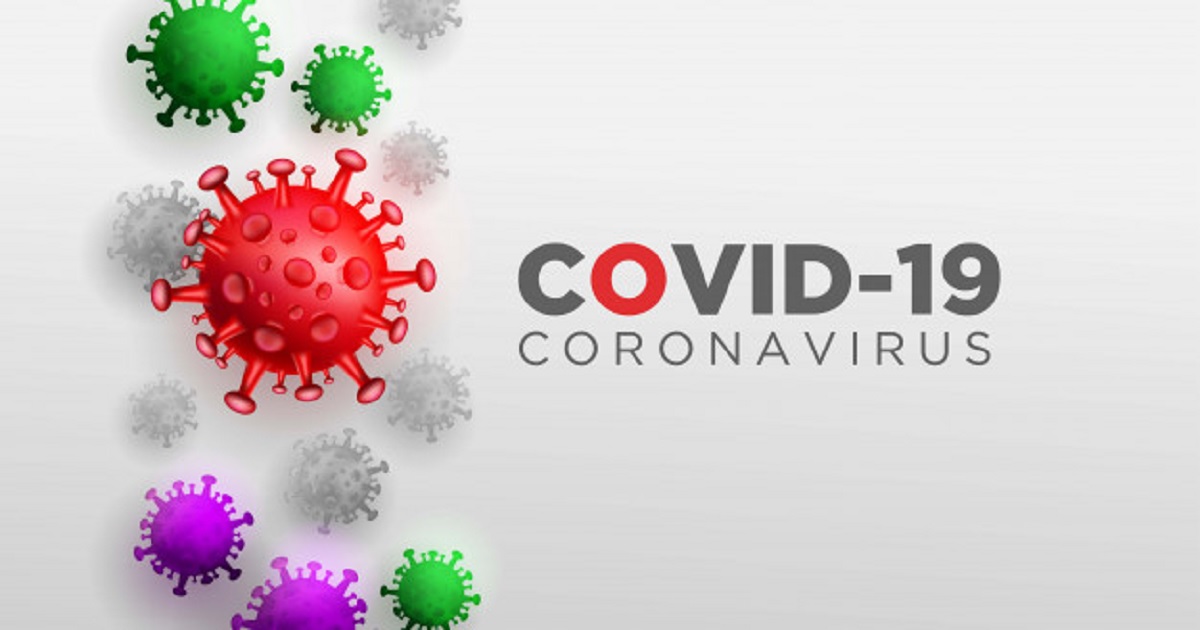
Government Business
Article | July 14, 2022
The General Services Administration plans to run an artificial-intelligence-based pilot program to help speed up how agencies procure innovative and commercial solutions. The pilot will use a combination of artificial intelligence, machine learning and robotic process automation to help GSA learn how to streamline the acquisition process, fast-track vendor selection timelines, simplify contract administration for innovative commercial items. FEDSIM is working with GSA’s Technology Transformation Service and the Centers for Medicare and Medicaid Services, the sponsoring customer, to find a software-as-a-service solution that CMS regulatory staff can use to modernize regulatory workflows.
Read More

Emerging Technology
Article | July 16, 2022
Blockchain has started to take off. It is now seen as an important part of development. More and more countries and governments are optimistic about joining the race of leveraging blockchain to commence different projects. It can be used in process optimization, cybersecurity, or integrating connected devices. This distributed ledger format is intended to support both public and government sectors, concluding, identity management, digital currency, payments, health care, land registration, voting, and management of legal entities.
Need For Blockchain in Government Sector
To provide maximum governance, the government must transform itself digitally from both intra-departmental and interdepartmental perspectives. As different departments run on different disjoint technologies, it leads to the concern of data consistency and data integrity. Due to which it becomes highly essential to incorporate multiple digital identities based on citizens in each department to make cross-referencing an easier task. And this is what Blockchain is for and should be used by the government.
Moreover, all over the world, banks are turning towards blockchain technology as a support for their complicated economy. They are going to utilize blockchain for issuing digital currencies. That’s the reason why the central banks of Russia, Japan, Britain, China, and the US are planning to meet and explore digital potential before launching CBDC (Central Bank Digital Currency).
Advantages Of Blockchain
By using Blockchain, governments can acquire several benefits. Some of which are:
1. Data Protection
Personal data has always been higher risk in the unique ids saved by the government. Crucial details have sometimes been open to public records leading to data breach attacks. With the use of blockchain, these intensities can be easily avoided as the blocks are secured from cyber attacks.
2. Transparency
It has been found that citizens have low trust in government bodies due to the unawareness of the reason behind their decisions. However, blockchain tends to remove the barrier of secrecy by creating a distributed network that enables participants to verify data that led to the decision.
3. Reduced Corruption
Every public service department has at least one corrupt officer. So the government is taking measures to remove such personals which indeed is not possible due to other corrupt officials. However, with the inclusion of the Blockchain system, the mediator link will be terminated from the government system leading to the dumping of the corrupted officials.
Final Thoughts
One of the most intimidating things about blockchain is the absence of regulatory bodies that can cause any theft or scams. For a modern digital world, blockchain resembles a key-tool for securing digital records, developing economic transition, budgeting, and so much more. Companies that want to establish themselves as the pioneer in the upcoming blockchain revolution should also hire developers to develop their own blockchain-based apps or platforms for secured transactions.
Read More

Cybersecurity
Article | March 23, 2022
On April 8, 2020, the Federal Trade Commission (FTC) – a United States government agency that is the nation’s primary privacy and data security enforcer – issued guidance to businesses on the use of Artificial Intelligence (AI) for machine learning technology and automated decision making with regard to federal laws that included the Fair Credit Reporting Act (FCRA) that regulates background checks for employment purposes.
Read More

Article | July 14, 2020
The COVID-19 virus (C19) pandemic is turning out to be the event of the century. Even World War seems timid in comparison. We are in the 4th month of the virus (in non-China countries) and have gone past the lockdown in many places. Isn’t it time we re-think the approach? What if there is another wave of C19 coming soon? What if C19 is the first of many such events in the future?
Before we get into analysis and solution design, summarizing the C19 quirks:
While a large section of the affected population is asymptomatic, for some it can be lethal
There isn’t clarity on all the ways C19 spreads
It’s known to affect the lungs, heart, and kidneys in patients with weak immunity
It has been hard to identify a definitive pattern of the virus. Some observations in managing the C19 situation are:
With no vaccine in sight, the end of this epidemic looks months or years away
Health care personnel in hospitals need additional protection to treat patients
Lockdowns lead to severe economic hardship and its repeated application can be damaging
Quarantining people has an economic cost, especially in the weaker sections of society
If one takes a step back to re-think about this, we are primarily solving 2 problems:
Minimise deaths: Minimise the death of C19 and non-C19 patients in this period
Maximise economic growth: The GDP output/growth should equal or higher than pre-C19 levels
One needs to achieve the 2 goals in an environment of rising number of C19 cases.
Minimise deaths
An approach that can be applied to achieve this is:
Data driven health care capacity planning
Build a health repository of all the citizens with details like pre-existing diseases, comorbidity, health status, etc. The repository needs to be updated quarterly to account for patient data changes
This health repository data is combined with the C19 profile (disease susceptibility) and/or other seasonal diseases to determine the healthcare capacity (medicines, doctors, etc.) needed
The healthcare capacity deficit/excess needs to be analysed in categories (beds, equipment, medicine, personnel, etc.) and regions (city, state, etc.) and actions taken accordingly
Regular capacity management will ensure patients aren’t deprived of timely treatment. In addition, such planning helps in the equitable distribution of healthcare across regions and optimising health care costs. Healthcare sector is better prepared to scale-up/down their operations
Based on the analysis citizens can be informed about their probability of needing hospitalisation on contracting C19. Citizens with a higher health risk on C19 infection should be personally trained on prevention and tips to manage the disease on occurrence
The diagram below explains the process
Mechanism to increase hospital capacity without cost escalation
Due to the nature of C19, health personnel are prone to infection and their safety is a big issue. There is also a shortage of hospitable beds available. Even non-C19 patients aren’t getting the required treatment because health personnel seek it as a risk. This resulted in, healthcare costs going up and availability reducing.
To mitigate such issues, hospital layouts may need to be altered (as shown in the diagram below). The altered layout improves hospital capacity and availability of health care personnel. It also reduces the need for the arduous C19 protection procedures. Such procedures reduce the patient treatment capacity and puts a toll on hospital management.
Over a period, the number of recovered C19 persons are going to increase significantly. We need to start tapping into their services to reduce the burden on the system. The hospitals need to be divided into 3 zones. The hospital zoning illustration shown below explains how this could be done. In the diagram, patients are shown in green and health care personnel are in light red.
**Assumption: Infected and recovered C19 patients are immune to the disease. This is not clearly established
Better enforcement of social factors
The other reason for high number of infections in countries like India is a glaring disregard in following C19 rules in public places and the laxity in enforcement. Enforcement covers 2 parts, tracking incidents of violation and penalising the behaviour. Government should use modern mechanisms like crowd sourcing to track incidents and ride on the growing public fear to ensure penalty enforcement succeeds. The C19 pandemic has exposed governance limitations in not just following C19 rules, but also in other areas of public safety like road travel, sanitation, dietary habits, etc.
Maximise economic growth
The earlier lockdown has strained the economy. Adequate measures need to be taken to get the economy back on track. Some of the areas that need to be addressed are:
One needs to evaluate the development needs of the country in different categories like growth impetus factors (e.g. building roads, electricity capacity increase), social factors (e.g. waste water treatment plants, health care capacity), and environmental factors (e.g. solar energy generation, EV charging stations). Governments need to accelerate funding in such projects so that that large numbers of unemployed people are hired and trained. Besides giving an immediate boost to the ailing economy such projects have a future payback. The governments should not get bogged down by the huge fiscal deficit such measures can create. Such a mechanism to get money out in the economy is far than better measures like QE (Quantitative Easing) or free money transfer into people’s bank accounts
Certain items like smartphone, internet, masks, etc. have become critical (for work, education, critical government announcements). It’s essential to subsidise or reduce taxes so that these items are affordable and accessible to everyone without a financial impact
The government shouldn’t put too many C19 related controls on service offerings (e.g. shops, schools, restaurants, cabs). Putting many controls increases the cost of the service which neither the seller not buyer is willing or able to pay. Where controls are put, the Govt should bear the costs or reduce taxes or figure out a mechanism so that the cost can be absorbed.
An event like the C19 pandemic is a great opportunity to rationalise development imbalances in the country. Government funding should be channelized more to under-developed regions. This drives growth in regions that need it most. It also prevents excess migration that has resulted in uncontrolled and bad urbanisation that has made C19 management hard (guidelines like social distance are impossible to follow)
Post-C19 lockdown, the business environment (need for sanitizers, masks, home furniture) has changed. To make people employable in new flourishing businesses there could be a need to re-skill people. Such an initiative can be taken up by the public/private sector
The number of C19 infected asymptomatic patients is going to keep increasing. Building an economy around them (existing, recovered C19 patients) may not be a far-fetched idea. E.g. jobs for C19 infected daily wage earners, C19 infected taxi drivers to transport C19 patients, etc.
In the last 100 years, mankind has conquered the destructive aspects of many a disease and natural mishap (hurricanes, floods, etc.). Human lives lost in such events has dramatically dropped over the years and our preparedness has never been this good. Nature seems to have caught up with mankind’s big strides in science and technology. C19 has been hard to reign in with no breakthrough yet. The C19 pandemic is here to stay for the near future. The more we accept this reality and change ourselves to live with it amidst us, the faster we can return to a new normal. A quote from Edward Jenner (inventor of Small Pox) seems apt in the situation – “The deviation of man from the state in which he was originally placed by nature seems to have proved to him a prolific source of diseases”.
Read More